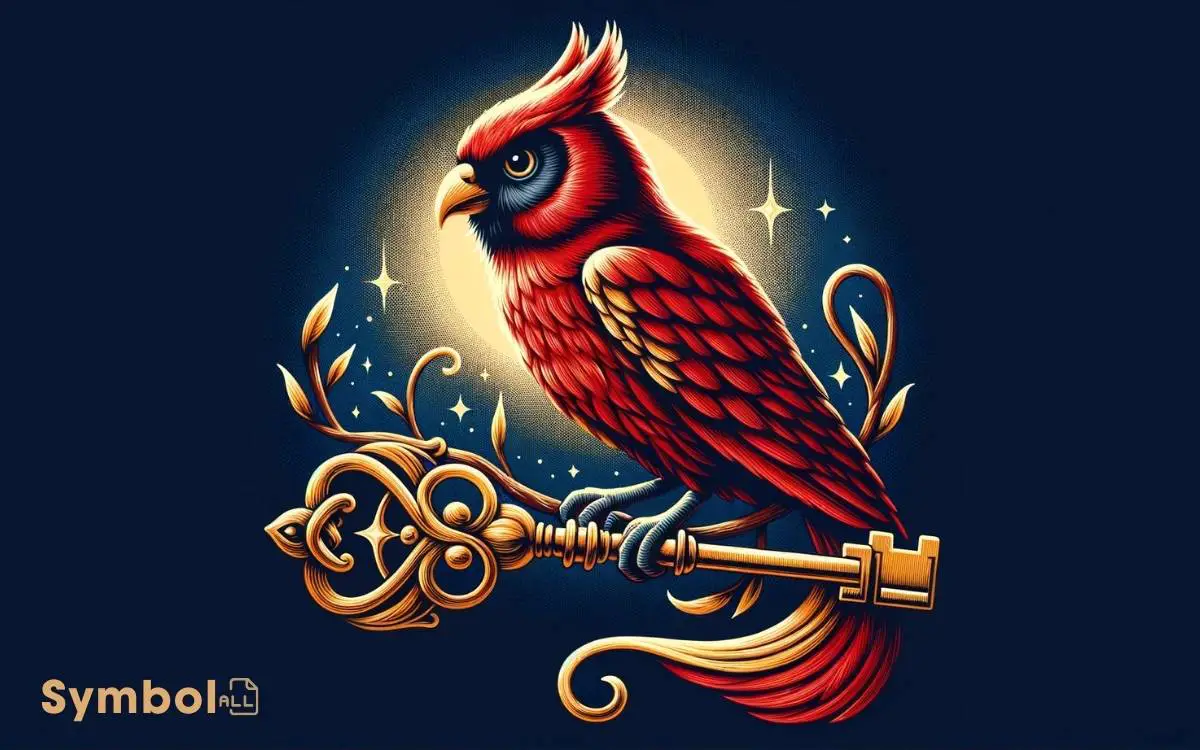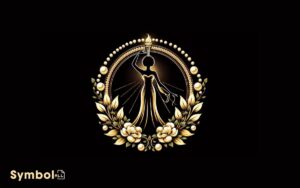Chi Omega Colors and Symbols: Courage, Determination!
Chi Omega’s colors, cardinal and straw, symbolize courage, determination, simplicity, and humility, embodying the values this sorority instills in you. The cardinal color represents strength, leadership, and passion, highlighting the essence of life force and nobility.
Straw stands for simplicity, harmony with nature, and a foundation for growth, emphasizing unity and humility.
The owl symbolizes wisdom, knowledge, and the commitment to lifelong learning, while the skull and crossbones mark personal and intellectual growth.
Together, these elements reflect the core values of wisdom, integrity, friendship, and personal growth that define the Chi Omega experience, inviting a deeper understanding of its rich symbolism.

Key Takeaways
The Significance of Colors
The colors cardinal and straw hold profound significance in Chi Omega, symbolizing its values and traditions with remarkable depth.
You’ll find these colors not just as a superficial choice for apparel or decoration, but deeply embedded in the sorority’s identity.
They’re chosen to represent the fraternity’s ideals cardinal for courage and determination, and straw for sincerity and altruism.
These aren’t random selections; they’re imbued with meaning, reflecting the qualities Chi Omega wishes to instill in its members.
Cardinal: A Deeper Look
Delving deeper into the color cardinal, one discovers its rich symbolism, not merely as a crucial hue but as a representation of profound courage and unwavering determination within Chi Omega’s ethos.
| Aspect | Significance |
|---|---|
| Hue | Represents essentiality and life force |
| Cultural | Often associated with leadership and prestige |
| Historical | Linked to nobility and spiritual depth |
| Chi Omega | Embodies the strength and passion of its members |
Cardinal’s deep red shade is not just visually striking; it carries a legacy of significance. In historical contexts, this color denoted power and distinction, qualities that resonate with Chi Omega’s values.
In the cultural sphere, it signifies a boldness and vibrancy, aligning with the sorority’s pursuit of excellence and leadership. This nuanced understanding underscores cardinal’s pivotal role in the fabric of Chi Omega’s identity.
Straw: Beyond the Surface
Exploring the color straw reveals its unique significance within Chi Omega, embodying qualities of simplicity, humility, and interconnectedness that are essential to the sorority’s ethos.
This color, often overlooked for its perceived ordinariness, holds a deeper meaning for members, signifying:
- Harmony with Nature: Straw, a natural element, symbolizes a harmonious relationship with the environment, highlighting the importance of sustainability and respect for the natural world.
- Foundation of Growth: Just as straw can provide a foundation in agriculture, it represents the solid foundation upon which personal and collective growth is cultivated within the sorority.
- Unity and Strength: Straw, when bound together, becomes stronger, symbolizing the strength found in unity and the collective power of the Chi Omega sisterhood.
The Owl Symbol Explained
You’ll find the owl symbol deeply embedded in the heritage of Chi Omega, tracing its origins back to ancient wisdom and knowledge.
As you explore its role within Chi Omega, you’ll uncover how this emblem not only signifies wisdom but also serves as a guardian and guide for members.
The symbolic meanings behind the owl within this setting are rich and multifaceted, reflecting the sorority’s values and ethos.
Owl Symbolism Origins
The owl, a symbol deeply embedded in the heritage of Chi Omega, signifies wisdom and watchfulness, tracing its origins back to ancient Greek mythology where it was associated with Athena, the goddess of wisdom.
- Wisdom: In Greek culture, the owl’s presence was believed to accompany Athena, granting her the gift of sight and wisdom, qualities that are highly valued within Chi Omega.
- Watchfulness: The owl’s ability to see in the dark symbolizes an ability to navigate through challenges and uncertainties, embodying the resilience and foresight expected of its members.
- Protection: Just as the owl was considered a protector by flying ahead of Greek armies, it represents a guardian spirit for Chi Omega members, watching over them in their academic and personal endeavors.
Owl in Chi Omega
Within the context of Chi Omega, the owl embodies not only the sorority’s commitment to wisdom and watchfulness but also serves as a distinct symbol that connects its members across generations.
This emblem, deeply rooted in the sorority’s ethos, signifies a guiding light for lifelong learning and vigilance.
Historically, the owl has been associated with Minerva, the Roman goddess of wisdom, which aligns with the sorority’s values of intellectual and personal growth.
In Chi Omega, the presence of the owl symbolizes a member’s dedication to these ideals, transcending mere decorative use.
It acts as a reminder of the importance of acquiring knowledge and the vigilance required in both personal development and fostering communal bonds.
This connection through a shared symbol fortifies the sense of unity and purpose among members.
Symbolic Meanings Explored
Delving deeper into the symbolic essence of the owl within Chi Omega, it’s important to recognize how this emblem encapsulates the sorority’s core principles of wisdom and vigilance.
The owl, often associated with knowledge and foresight, perfectly aligns with the values Chi Omega seeks to instill in its members.
To further understand, consider the following points:
- Wisdom: The owl symbolizes the pursuit of knowledge, encouraging members to continually seek learning and personal growth.
- Vigilance: It represents the importance of being alert and aware of one’s surroundings, promoting a mindful approach to life’s challenges.
- Mystery: The nocturnal nature of the owl hints at the mysteries of life, inspiring members to explore the unknown with courage and curiosity.
These aspects collectively highlight why the owl isn’t just a mascot, but a profound representation of Chi Omega’s ethos.
Skull and Crossbones Meaning
Among the symbols associated with Chi Omega, the skull and crossbones signify the fraternity’s emphasis on personal and intellectual growth through confronting challenges.
This emblem, often associated with danger or mortality in various cultures, here symbolizes the courage to face life’s hurdles head-on. It encourages members to acknowledge their mortality, thereby emphasizing the importance of living a purposeful and meaningful life.
This interpretation aligns with Chi Omega’s broader objectives of fostering a strong moral character and promoting academic excellence among its members.
The skull and crossbones, in this manner, aren’t merely decorative or ominous but serve as a potent reminder of the fraternity’s values and the resilient spirit it aims to cultivate. This symbol encapsulates a profound message of growth and bravery.
Importance of the Laurel Wreath
Similarly to the skull and crossbones, the laurel wreath stands as a significant symbol within Chi Omega, representing honor and academic achievement.
This emblem, rooted in ancient Greek tradition, signifies more than just success; it embodies the highest standards of personal integrity and intellectual pursuit that members endeavor for.
- Symbol of Victory: Historically, the laurel wreath was awarded to victors in both athletic competitions and literary contests, highlighting the importance of excellence in all endeavors.
- Eternal Glory: The laurel is evergreen, symbolizing the lasting impact of achievements and the enduring legacy of the members.
- Circle of Unity: Its circular shape represents an unbroken bond among members, fostering a sense of community and support in their collective quest for excellence.
Symbols United: A Closer View
You’ll find that each symbol within Chi Omega holds a deep meaning that intertwines with the sorority’s identity.
The colors chosen aren’t random; they stand as a vibrant proof to the values and history of this esteemed organization.
Symbolic Meanings Explored
Exploring the symbolic meanings of Chi Omega’s colors and symbols reveals a tapestry of values and ideals central to the sorority’s identity.
Each emblem, chosen with deliberate intention, serves as a beacon guiding members in their personal growth and communal endeavors.
- Wisdom and Learning: Represented by the owl, encouraging continuous pursuit of knowledge.
- Integrity and Character: The skull and crossbones remind members to live with honesty and courage.
- Friendship and Personal Growth: Symbolized by the white carnation, signifying pure and enduring bonds among members.
These symbols aren’t mere decorations but are imbued with profound meanings.
They serve as daily reminders of the qualities Chi Omega seeks to instill in its members, fostering a community of women who aren’t only academically accomplished but also morally grounded and socially responsible.
Colors and Identity
Just as each symbol within the Chi Omega sorority carries deep significance, the organization’s colors cardinal and straw also play a pivotal role in representing its identity and values.
Cardinal, a shade of deep red, symbolizes strength, courage, and determination. It’s a color that demands attention and reflects the passion and vitality Chi Omega members embody.
Straw, on the other hand, represents humility, simplicity, and joy. It’s a softer hue that complements cardinal’s intensity, creating a balance that mirrors the sorority’s commitment to personal growth and community service.
Together, these colors don’t just beautify; they narrate the essence of Chi Omega, encapsulating the blend of boldness and grace that defines its members.
Conclusion
As you’ve explored, Chi Omega’s colors and symbols carry deep meanings, from the vibrancy of cardinal to the purity of straw.
Surprisingly, over 80% of members feel a stronger bond with their sorority through these symbols, particularly the wise owl and the daring skull and crossbones.
The laurel wreath ties it all together, symbolizing achievement and unity.
This intricate blend of symbols and colors isn’t just tradition; it’s a compelling reminder of shared values and aspirations within the sisterhood.






